Burger cooked in a bowl, and
bread drenched with juice
I begin by putting a raw, ground beef burger in a Pyrex bowl,
and then I put the cover on the bowl, and place it in water that is held
between 54°C to 60°C (130°F to 140°F). The photo below shows a very large burger
that is described later.
The photo below shows a slightly smaller burger, after it has
been cooked to about 60°C (140°F). All of the juice in the bowl came from
the burger. I did not add any water.
In this example, I put one half of my piece of freshly baked,
freshly ground whole-grain bread in the bottom of the bowl, and pour the
juice on top of it.
The bread is now drenched
with beef juice, and your first reaction is that it's going to become soggy
and mushy, but this type of bread will retain its strength the entire
time I am eating the burger.
In the photo below, I have eaten only one
small wedge of the burger, but there is already less juice in
the bowl because the bread has absorbed some of it.
Normally I wouldn't want to touch this soggy burger, but I
want to show you that the bread is retaining its shape and strength. This
type of bread is stronger than commercial bread because the grind is more
coarse, the grains absorb a lot of liquid, and I didn't let it rise to
the point at which it's fluffy and airy.
This bread is virtually identical to the flat sheet that I
describe in
this video,
but in this case I made a circular piece of bread twice as thick as that
flat sheet, and then cut the piece in half, and the burger is on one half
of the bread. The primary grain is Kamut, with a small amount of wheat
and other grains.
Very rare buffalo burger with pickled
tomato
The photo below shows a wedge of a burger that I did not cook
for as long a period of time, so less juice oozed out of the meat, which
in turn means the meat is juicier, and the bread is dryer. Note: this particular
burger is made of ground buffalo, which
has less fat than ground beef, but
the main reason the bread has so little juice or fat is because most of the meat
is almost raw. The meat is warm, but only a thin layer on the top of the burger was cooked,
and even layer was cooked only briefly, and at a low temperature.
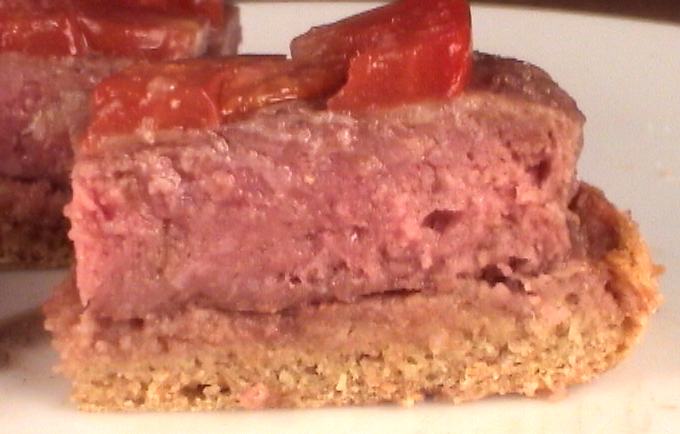
On this particular burger, I put some tomato slices on the
top, and these are slices that I soaked in white vinegar for an hour or
so. This adds a tomato flavor and some vinegar, both of which I enjoy with
buffalo and beef burgers.
Burger cooked in a bowl,
and placed on bowl shaped bread
The photos below show an even more extreme example of how incredibly
juicy we can make burgers, and how much liquid the bread can handle. For
this example, I made a circular piece of bread with a slightly raised edge,
thereby creating a shallow bowl. Since the surface of baked bread is not
very absorbent, I am poking holes into this bun with a plastic fork in
order to allow the juice from the burger to get into the bun at a more
rapid rate.
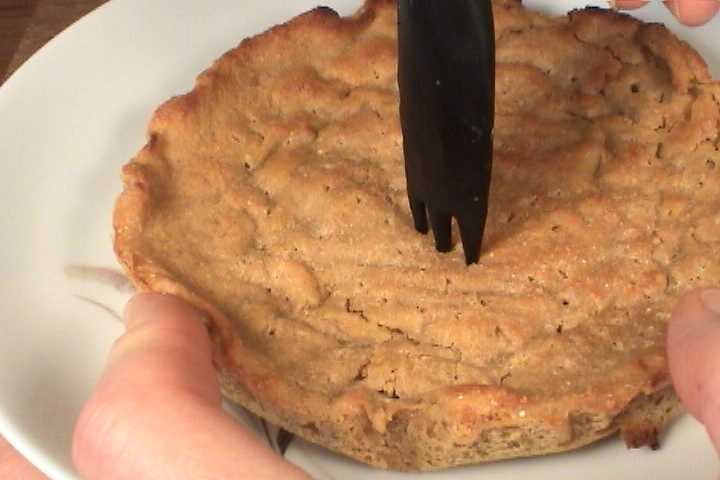
This particular beef (Kobe beef burgers from Trader Joe's), does not
have much fat, and so to increase the fat, and to further show the of absorption
ability of this type of bread, the photo below shows me putting some pieces
of a mixture of butter and olive oil onto the bread.

This bread was just removed from the oven, so it is still warm. The
photo below shows it after the butter and olive oil mixture has melted
into it.
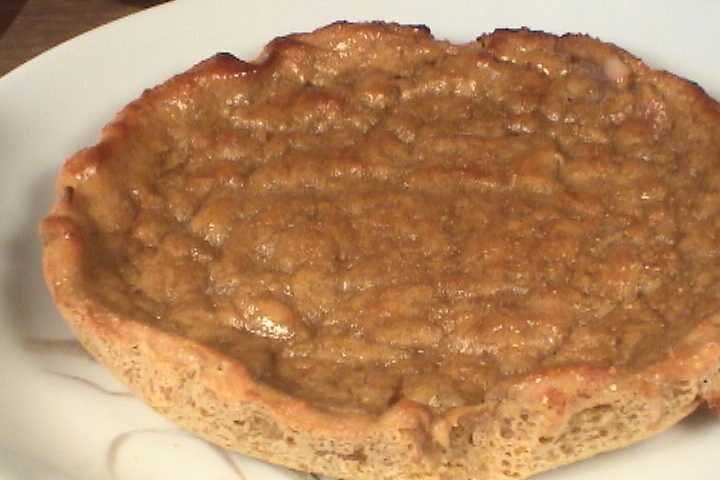
The photo below shows the burger has been fully cooked, at
least according to my standards. I suppose most people would describe this
burger as raw.
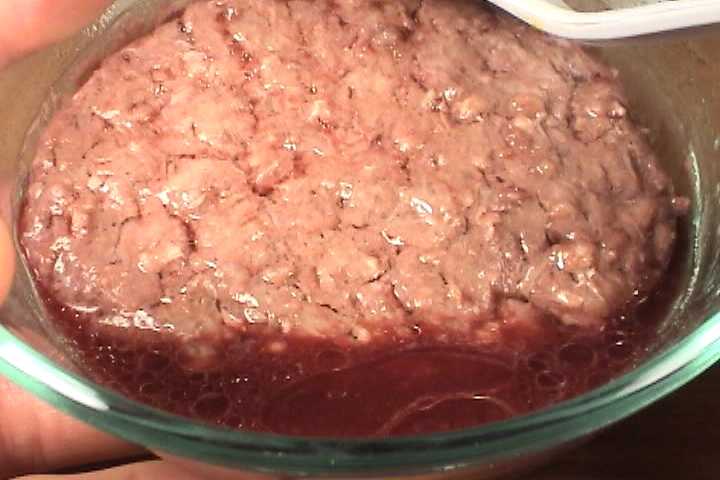
I begin by putting the juice from the burger onto the bowl shaped bun.
The juice is a dark red color, and looks like fresh blood. However, the
flavor is delicious! The vegetarians
should face the fact that humans, especially men, love
the flavor of meat and blood.
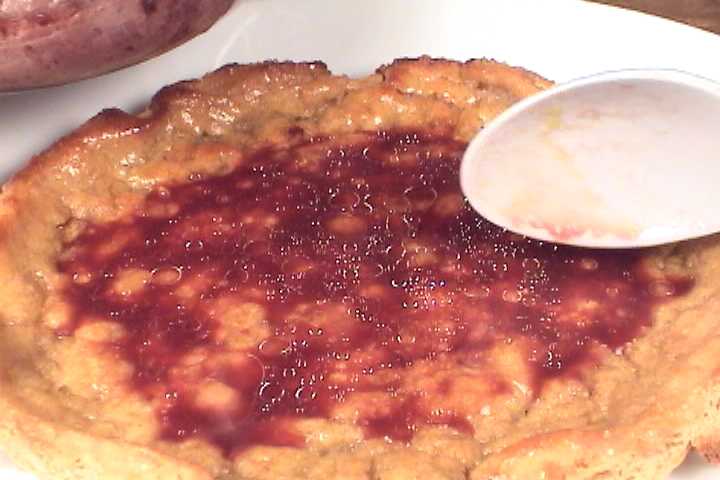
Then I put the burger onto the bun. Notice that the bun is full of
juice from the burger. You may assume that the bun will soon become soggy
and turn to a mush, but this bread, made from freshly ground grains, has
much more absorbency than the fluffy buns that the markets are selling.
Also, I can increase the absorption ability of the bread by increasing
the amount of wheat, by making a coarser grind, and/or by making the bread
more dense and less fluffy.
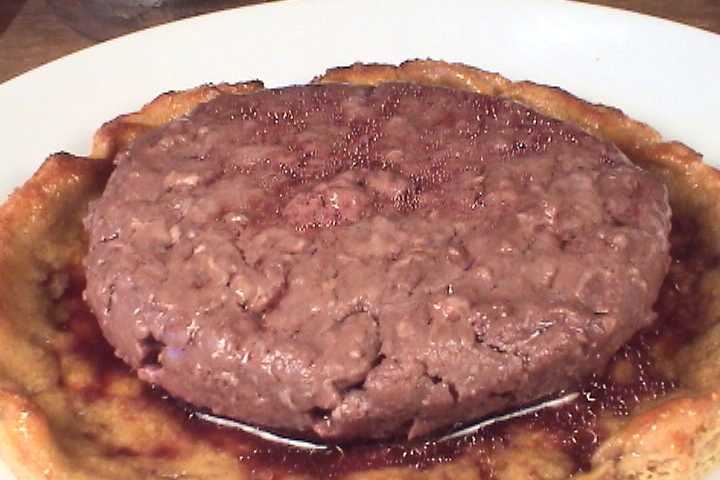
In the photo below, I've eaten a wedge of the burger, and notice that
a lot of the juice has already been absorbed by the bread.
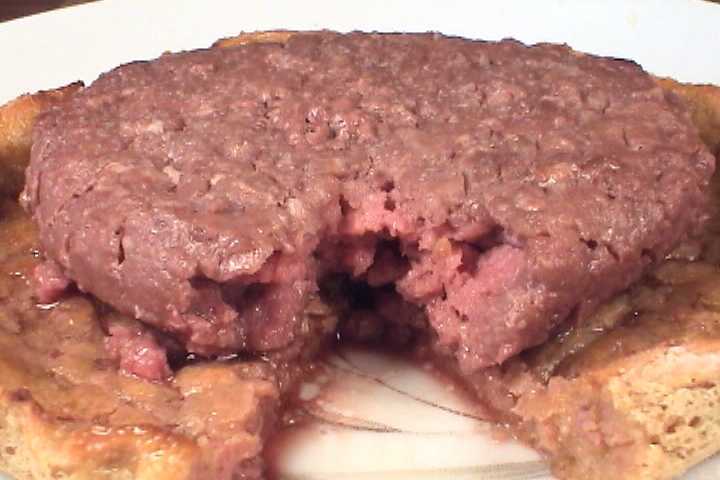
The photo below shows a close-up of the burger after I have eaten another
wedge. There is now even less juice because the bread has absorbed almost
all of the liquid.
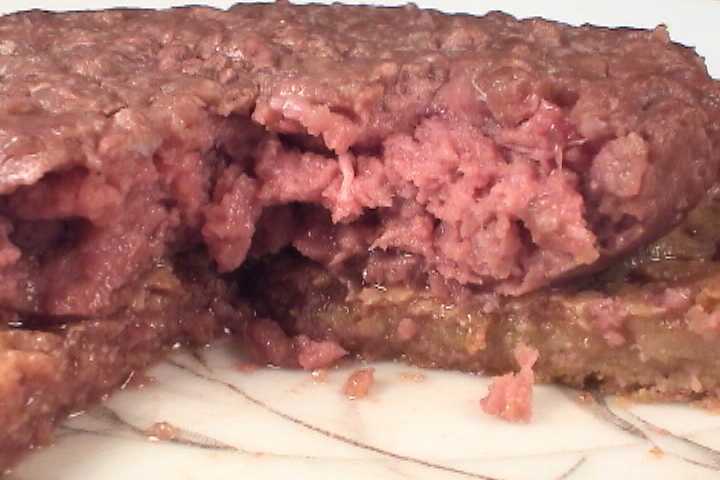
The photo below shows the burger after I've eaten yet another wedge,
and now there is almost no liquid on the top of the bun or on the plate.
The bread has absorbed all of the juice, but, although it may not be obvious,
the bun is holding its shape. It has not turned to mush. It has absorbed
all of the olive oil and butter, and all of the juice.
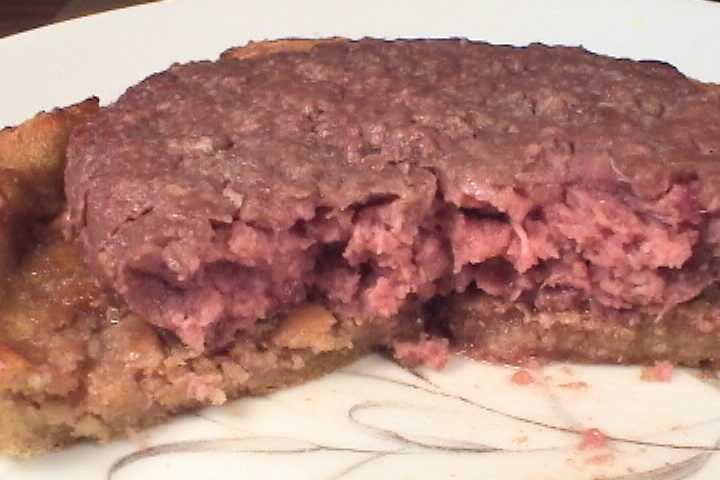
This burger is incredibly juicy and flavorful because both
the meat and the bun are full of beef juice, and no parts of it have been
burnt. Actually, neither the burger or the juice exceeded a temperature
of 60°C (140°F), and I suppose the interior of the burger didn't even reach
57°C (135°F).
Burgers made in this manner have such a delicious flavor that I don't
need to add any sauces, spices, or other toppings. Since I don't put any
salt into the bread, all I do is add a bit of salt to the burger.
It is unbelievably delicious!
|